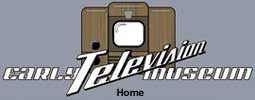 |
 |
 |
 |
30 Line Nipkow Disk Prototype
History
In 1928, Ernest CHAMON, President of Compagnie des Compteurs in Montrouge went to London, accompanied by his Director Jean Le DUC. They meet John L. BAIRD and attend a television demonstration. On their return to France, Ernest CHAMON asked Jean Le DUC to create a television service. The latter called upon a great mathematician from the Ecole Supérieure d'Electricité (current SUPELEC): René BARTHELEMY, to create and direct the future testing laboratory.
In 1931, in Malakoff, France, the first public demonstration of television was held in the amphitheater of the Ecole Supérieure d'Electricité, at the request of its director Paul JANET.
BARTHELEMY very quickly realized the vagaries of the Baird system, which did not make it possible to obtain a sufficient stability of the image. He then worked hard on the thorny problem of synchronization and filed several patents regarding this problem. He also communicated the results of his work to the Academy of Sciences through regular conferences.
While the British retained the BAIRD system with a 7/3 format, BARTHELEMY very quickly adopted the 4/3 format, which allowed the use of telecine and the televising of films on the Nipkow disc receivers.
In 1931 French television leaves the laboratory, but much remains to be done to make it commercially exploitable.
At that time, only the British have regular programs broadcast by the BBC with the material provided by J.L BAIRD Co.
Characteristics of the prototype
- This machine has been designed using the technology available at the time it represents. Thus, the image amplifier is built with tubes and transformers from 1930.
- The Nipkow disc with 30 holes is driven by a synchronous motor regulated by the frequency of the power line . Its speed of 750 rpm is therefore perfectly stable. It is possible to view movies in 4/3 format.
- Unlike the BAIRD machine where the lines are scrolled in a vertical direction from bottom to top and from right to left, here the scanning takes place from left to right and from top to bottom. This format was also used by the German firm TEKADE.
- The red-orange color of the rudimentary images that can be seen on this machine is characteristic of what was observed with the neon lamp placed behind the Nipkow disc.
- When BARTHELEMY began his tests using 30 lines, few people followed his experimental transmissions, because apart from the firm INTEGRA which produced some television sets, there were no devices available on the market. Most savvy amateurs build their own machines.
- The prototype presented here is quite close to what they were able to achieve with the means that were available.